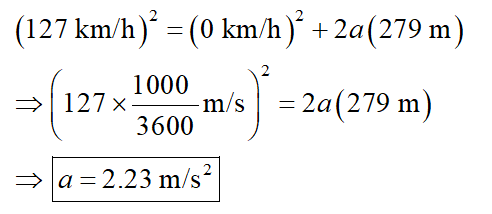(a) What minimum constant acceleration does the aircraft require if it is to be airborne after a takeoff run of 279 m? m/s2 (b) How long does it take the aircraft to become airborne? s
Displacement, Velocity and Acceleration
In classical mechanics, kinematics deals with the motion of a particle. It deals only with the position, velocity, acceleration, and displacement of a particle. It has no concern about the source of motion.
Linear Displacement
The term "displacement" refers to when something shifts away from its original "location," and "linear" refers to a straight line. As a result, “Linear Displacement” can be described as the movement of an object in a straight line along a single axis, for example, from side to side or up and down. Non-contact sensors such as LVDTs and other linear location sensors can calculate linear displacement. Non-contact sensors such as LVDTs and other linear location sensors can calculate linear displacement. Linear displacement is usually measured in millimeters or inches and may be positive or negative.
A certain aircraft has a liftoff speed of 127 km/h.
m/s2
(b) How long does it take the aircraft to become airborne?
s
a)
The aircraft’s acceleration can be determined by the following kinematics equation.

Here, u, v, a, and x represent the aircraft’s initial velocity, final velocity (take of velocity), acceleration, and displacement, respectively.
The aircraft’s initial speed is zero.
Substitute the relevant values to determine the acceleration.

The aircraft’s minimum constant acceleration is about 2.23 m/s.
Trending now
This is a popular solution!
Step by step
Solved in 2 steps with 4 images









